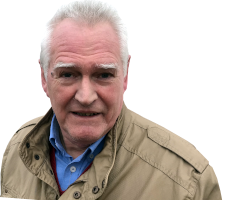search
date/time
 | Yorkshire Times A Voice of the Free Press |

Mike Tilling
Arts Correspondent
12:00 AM 11th May 2024
arts
Review
Classical Music: Britten
Spring Symphony; Sinfonia da Requiem; Young Person’s Guide to the Orchestra
London Symphony Orchestra – Conducted by Sir Simon Rattle
Elizabeth Watts soprano
Alice Coote mezzo-soprano
Allan Clayton tenor
London Symphony Chorus Simon Halsey Chorus Director
Tiffin Boys' Choir, Tiffin Children's Chorus, The Tiffin Girls' School Choir. James Day director.
LSO0830 / LSO Live
https://www.lso.co.uk/
.jpg)
During the centennial celebrations of Britten's birth in 2013, I had the opportunity to see five of his operas either on stage or on screen. When asked what I thought of the experience, my clever dick reply was, ‘I’d give them all up for the First Act of Turandot’. I felt proud of this formulation because it avoided the accusation of being in thrall to Nessun Dorma and located my tastes in the exoticism of Italy and, by extension, China. On reflection, I realised that I did actually enjoy the orchestral pieces like the Courtly Dances in Gloriana or the Sea Interludes in Peter Grimes.
The Japanese government decided to supplement the celebrations of the imperial line's longevity by commissioning a number of pieces by composers from around the world. One composer approached was Benjamin Britten. The year was 1940, and, of course, shortly after the commissioning process, Japan would be at war with America and Britain. One wonders who ultimately selected the pieces.
The Japanese rejected Britten's piece of music because it was too Christian and lacked sufficient celebratory bombast. Britten responded by asking what the Japanese had expected—he was a Christian, and he had made it clear that he would write nothing that suggested triumphalism.
Anyway, it is difficult to see what his objections were. The opening strains of the trumpet put me strongly in mind of the Fanfare for the Common Man. Throughout the opening movement, there are gongs and timpani that allude to the music of Japan, though in no explicit way.
The second movement features a multitude of scurrying strings that have frequently symbolised urban life and industry for perhaps a century. Given Japan's drive for industrialization, they must have recognised what Britten was trying to do. Perhaps the whole piece was too downbeat for their purposes. Whatever the issues, it means that we have a piece located firmly within the mainstream of mid-twentieth-century practice.
The vocal part of the Spring Symphony is scored for tenor (Allan Clayton), soprano (Elizabeth Watts), alto (Alice Coote), mixed choir, and boys’ choir. The inspiration for the piece comes from the many poems about spring in English literature: Spenser, Milton, Vaughan, Blake, Auden, and numerous others.
We have to wait for the conventional optimism surrounding spring, but it does come eventually with Summer is Icumen in.
The Young Persons' Guide shares a history with the Sinfonia da Requiem, but this one revolves around the London Symphony Orchestra. Conducted by Sir Malcolm Sargent, they were the orchestra that played the piece for the first time in 1945. With the helpful subtitle Variations and Fugue on a Theme by Purcell, each section was designed to illustrate the unique qualities and colours of the instrumental families that make up a full orchestra. Sections are lettered, and the total runs from A to M, plus a final fugue.
Perhaps you have to be as antique as I am to remember a time when Benjamin Britten’s Young Person’s Guide to the Orchestra was played in schools. (Or perhaps you went to a Peter and the Wolf school.) When my friends and I smirked at the brittle RP voices that provided the commentary on those school recordings—a type of commentary rarely heard these days—I remember hiding my face behind a hand.
I must admit that I do not believe we had to sit through the piece in its entirety, but we certainly played extracts. Could this happen today? I very much doubt it.
I hope I am allowed one blind spot, because I still do not care for the operas. However, it is clear to me now that Britten certainly knew how to write for the orchestra, and with Sir Simon Rattle at the helm, marshalling the players of the LSO with precision and insight, this is a convincing and satisfying CD.